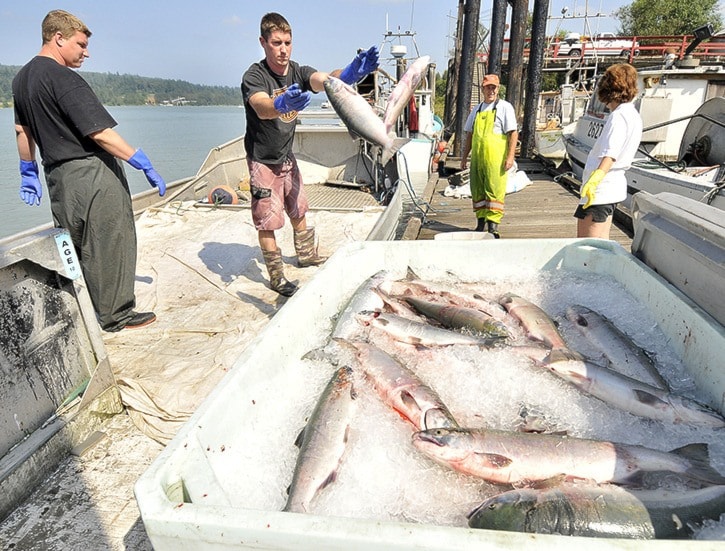Prince Rupert's United Fishermen and Allied Workers' Union (UFAWU) representative is concerned with changes the Department of Fisheries and Oceans (DFO) is considering to the BC salmon fishery.
The DFO is planning to change the salmon fishery from an open fishery model to individual transferable quotas (ITQ), which Joy Thorkelson said could put the fishery at a conservation risk and could leave fishermen on the North Coast holding the short end of the stick.
Under the current Open Fishery Model, the DFO establishes a species-specific allowable catch for a period of time, which is usually only a few days. The DFO is able to open up the fishery for additional days if the allowable amount isn't caught.
According to Thorkelson, one issue with a quota fishery is that the DFO has to be more precise with its allowable catch when managing the season.
"They can't really be precise with salmon because they really don't know how large the salmon run is every day or every week," said Thorkelson.
Conservation is also a concern because under the ITQ, fishermen are given more time to catch the allowable amount. If DFO makes a mistake with numbers, overfishing of a species is possible.
Thorkelson said another issue with ITQ is that quota can be bought, sold or leased.
"It's a privatization of the fish because it comes a commodity, before it's even caught, that you can buy, sell trade. It becomes like the stock market and the working fishermen is the one who loses," Thorkelson said.
“Fishermen will buy quota from people to fish their quota, and get paid very little for it, while the person they’re buying from cashes in,” she said.
The union notes ITQs are already in place in the halibut and bottom trawl fisheries where the majority of the resource must be leased by fishermen. The UFAWU claims that fishery proves lease holders reap the majority of the profits while crew members are left with the risk and expenses but poor pay.
“The lease price for halibut is around $5 per pound, fishermen sell it for $6 a pound. So they only fish for $1 a pound and the person who owns the halibut quota sits onshore and gets $5 per pound,” she said.
“The union believes the value of the catch should go 100 per cent to the people who are working to catch the fish. They shouldn’t have to pay for someone else’s ownership of the fish you are going to catch ... we prefer the open fishery, a quota fishery could be a management tool if DFO was sure that amount of quota could be reached without causing a conservation problem. But we’re totally opposed to the transferability of those quotas. One person should not own it and have another person fish it for them.”
But a shift in the method for managing the commercial fishery in the future is anything but certain according to the Department of Fisheries and Oceans (DFO).
“DFO is soliciting input in two phases. The first phase is focused on discussions on possible changes to the commercial salmon allocation framework and seeking advice given on how best to address the challenges facing the commercial salmon fisheries now and in the future. In a second phase, DFO will seek advice on the results of a socio-economic analysis and approaches to updating the commercial salmon allocation framework,” explained DFO spokesperson Kirsten Ruecker.
“DFO will consider the input of all user groups gathered during the consultation period, in any decisions affecting the fishery. The changes to the allocation framework will reflect the agreed objectives from participants. The options for the actual management of those shares within fisheries include, as happens today, a range from traditional competitive fisheries to ITQ fisheries as determined by the fishermen within the fleets.”
As for why changes are being looked at in the fishery, which is currently handled using an open fishery model, Ruecker said sustainability is key.
“The Department’s objective is to improve the long term stability, certainty and resilience of the commercial salmon fishery, to support effective business decisions, and to allow licence holders to better respond to changing salmon abundance and market conditions. The consultation process is expected to continue over the coming months and no changes to the existing allocation framework are anticipated for the 2014 fishery,” she said.
